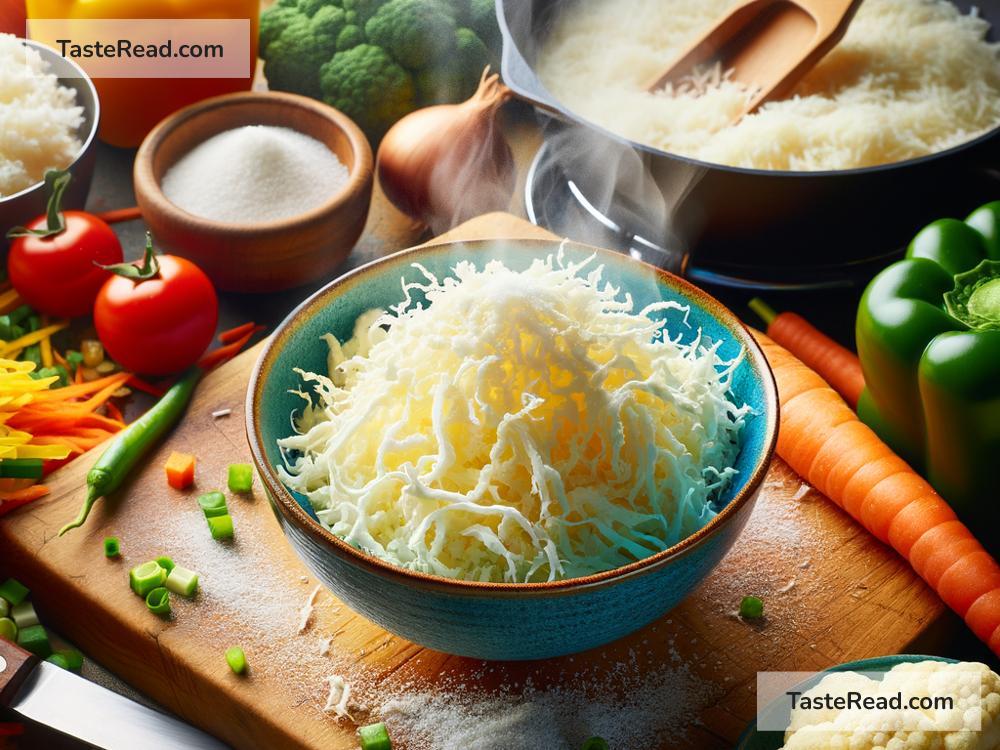Why Cauliflower Can Be Used As a Rice Alternative
Rice is one of the most popular and versatile foods in the world. From sushi to stir-fried dishes, rice is a staple in countless meals. However, not everyone can eat rice or wants to include it in their diets. Whether you’re trying to reduce your intake of carbs or calories or looking for gluten-free alternatives, cauliflower rice has become a go-to option for health-conscious eaters. But what makes cauliflower such a great alternative to rice? Let’s explore the reasons why cauliflower can replace traditional rice and why you might want to give it a try.
1. What Is Cauliflower Rice?
Cauliflower rice is simply cauliflower that has been chopped or grated into tiny pieces that resemble grains of rice. You can make it at home by using a food processor or a grater, or you can purchase pre-packaged cauliflower rice at grocery stores. Once prepared, cauliflower rice can be cooked and used in recipes just the way you would use regular rice—except it’s made from a vegetable!
2. Low in Calories
One of the main reasons people choose cauliflower rice is because it’s much lower in calories compared to regular rice. For example, one cup of cooked white rice contains about 200 calories, while a cup of cauliflower rice has only around 25–30 calories. This dramatic difference makes cauliflower rice an excellent choice for people looking to lose weight or manage their calorie intake.
Sometimes small changes, like swapping rice with cauliflower rice, can add up over time. If you eat rice regularly, switching to cauliflower rice occasionally can make a big impact on your overall diet.
3. Low in Carbs
Rice, especially white rice, is high in carbohydrates, which can sometimes contribute to weight gain or spikes in blood sugar levels. People on low-carb diets like keto or paleo often avoid rice because of its carb content. Cauliflower rice, on the other hand, is naturally low in carbohydrates, with only about 5 grams per cup (compared to about 45 grams of carbs in a cup of white rice).
For people trying to reduce carbs—whether for health reasons or to follow a specific diet—cauliflower rice offers a flavorful and satisfying alternative without the high carb count.
4. Rich in Nutrients
Cauliflower is packed with nutrients, making it more than just a rice substitute; it’s also a superfood! It’s loaded with vitamins C, K, and B6, as well as important minerals like potassium and magnesium. Additionally, cauliflower contains antioxidants that can help protect your body from damage caused by harmful free radicals.
Unlike white rice, which is often stripped of nutrients during processing, cauliflower provides health benefits with every bite. By swapping out rice for cauliflower rice, you’ll add more nutrients to your meals without sacrificing taste.
5. Versatile and Easy to Cook
One of the best things about cauliflower rice is how versatile it is. You can use it in a variety of recipes, including stir-fries, curries, fried rice, burrito bowls, and even as a base for sushi. Cauliflower’s mild flavor blends well with spices, sauces, and other ingredients, making it easy to adapt to your favorite dishes.
Cooking cauliflower rice is simple and quick. You can sauté it in a pan with a little oil, steam it, or add it directly to soups or casseroles. Unlike regular rice, which can take 20–30 minutes to cook, cauliflower rice usually cooks in under 5 minutes—perfect for busy days when you need a fast meal.
6. Great Option for Gluten-Free Diets
For people with gluten intolerance or celiac disease, finding alternatives to gluten-containing grains like rice can be a challenge. Cauliflower rice is naturally gluten-free, making it a safe choice for those with dietary restrictions. It’s also ideal for people seeking cleaner, more plant-based options in their meals.
7. Environmentally Friendly
Cauliflower is a sustainable crop that produces less environmental impact compared to growing rice. Rice farming often requires large amounts of water and land, and it can sometimes lead to environmental concerns like soil depletion. By using cauliflower rice in your meals, you can reduce your environmental footprint and support more sustainable food choices.
8. Helps with Digestive Health
Cauliflower is high in fiber, which plays a key role in digestion. Fiber helps keep your gut healthy by promoting regular bowel movements, preventing constipation, and supporting a balanced microbiome. While rice does provide some fiber (brown rice more so), cauliflower rice has a greater fiber content, helping you feel full and satisfied.
9. Better for Managing Blood Sugar
Cauliflower rice has a lower glycemic index compared to white rice, which means it doesn’t cause rapid spikes in blood sugar levels. This makes it a suitable option for people with diabetes or those looking to manage their blood sugar. By replacing rice with cauliflower rice, you can enjoy delicious meals without worrying about blood sugar fluctuations.
Conclusion
Cauliflower rice is a healthy, low-calorie, low-carb, and nutrient-rich alternative to traditional rice. It’s quick to prepare, versatile in recipes, and packed with benefits that make it a great addition to your diet. Whether you’re trying to lose weight, follow a specific diet, or simply add more veggies to your meals, cauliflower rice is worth trying.
Next time you’re planning a recipe that calls for rice, consider swapping it out for cauliflower rice. It might surprise you how easy, delicious, and satisfying it can be!


